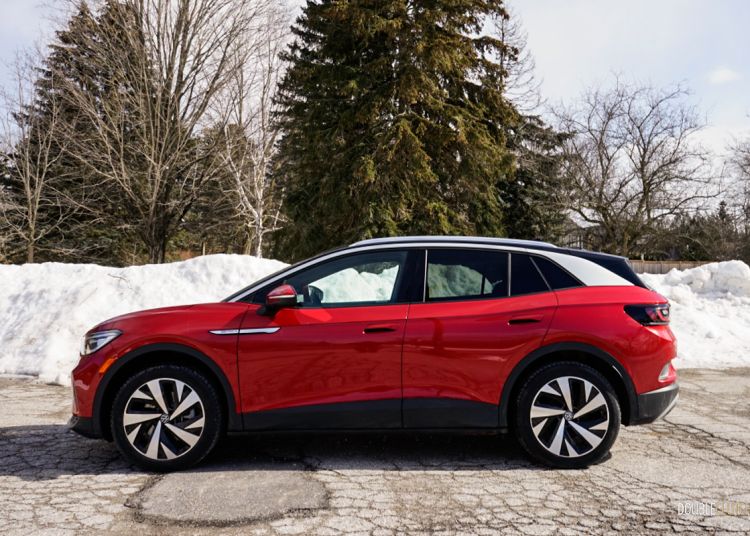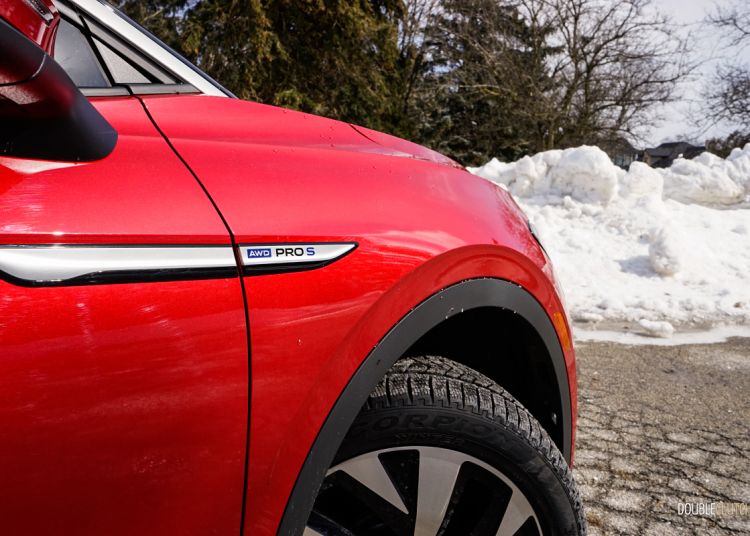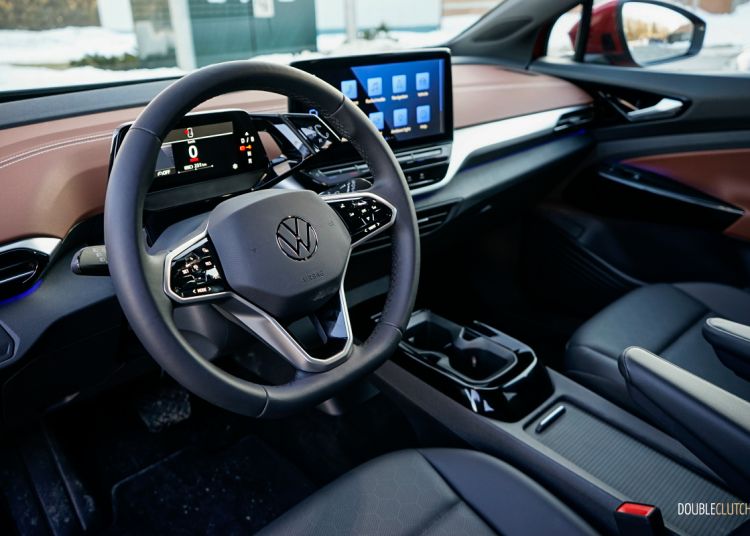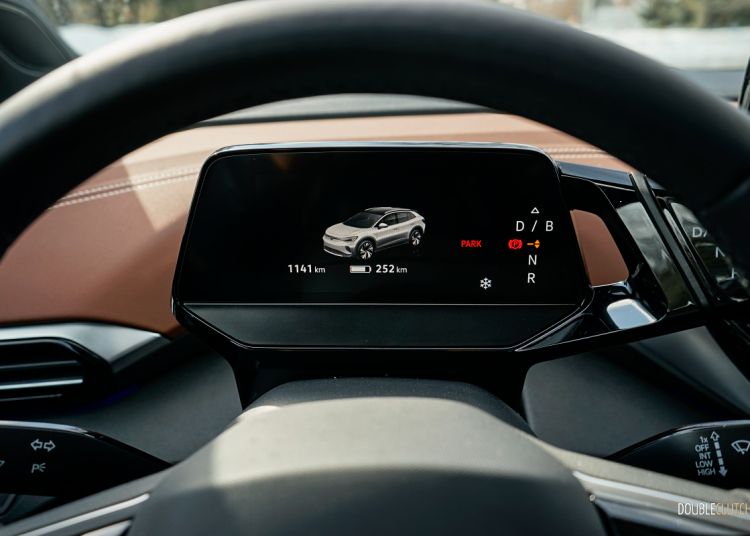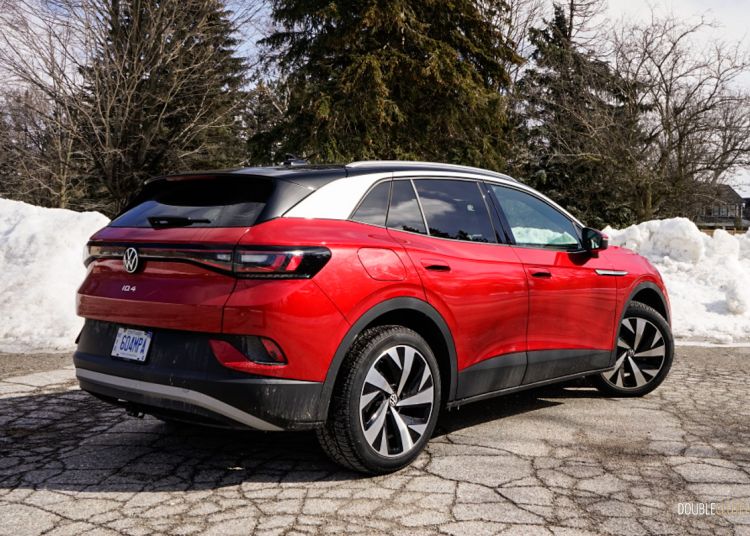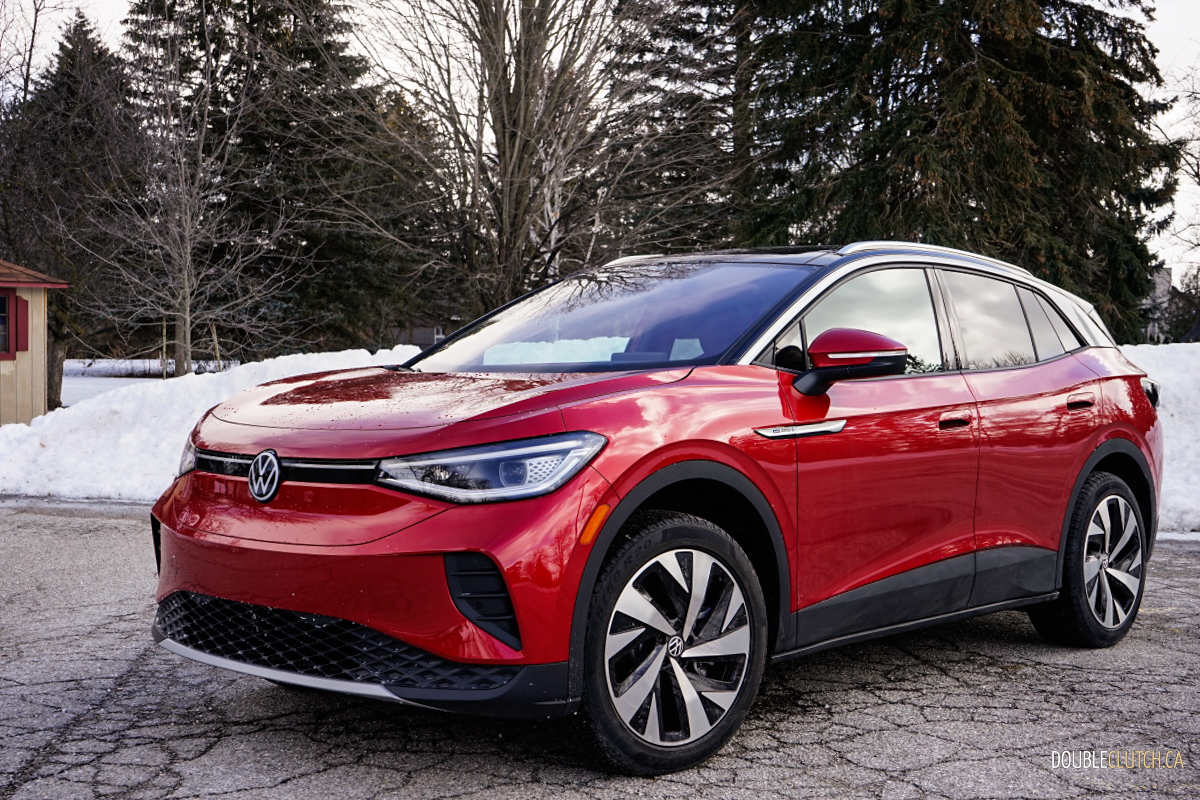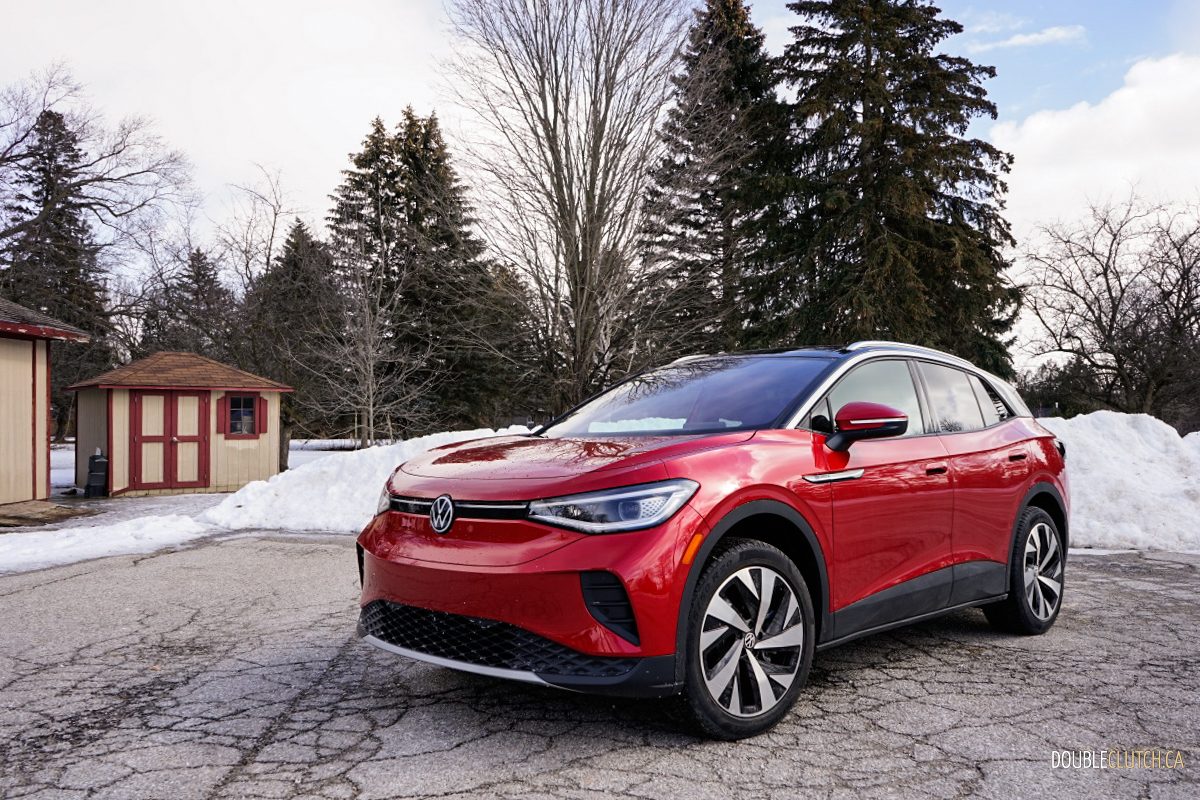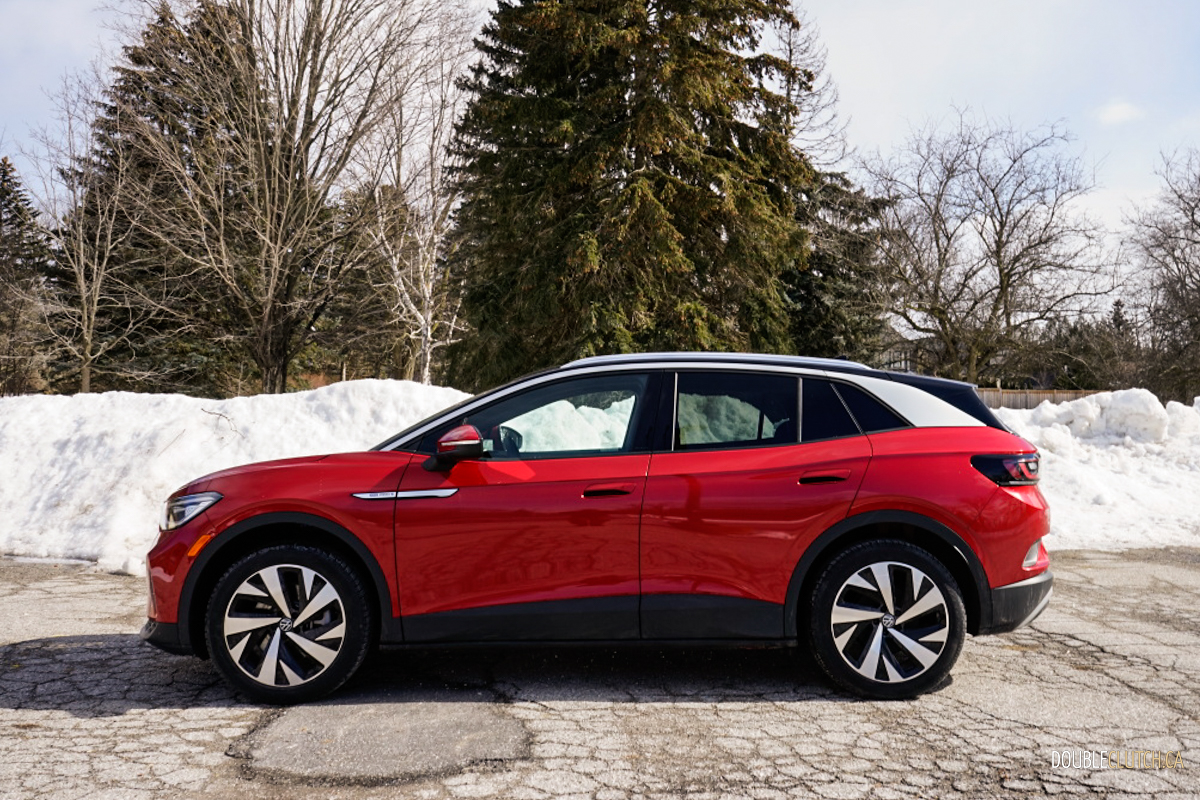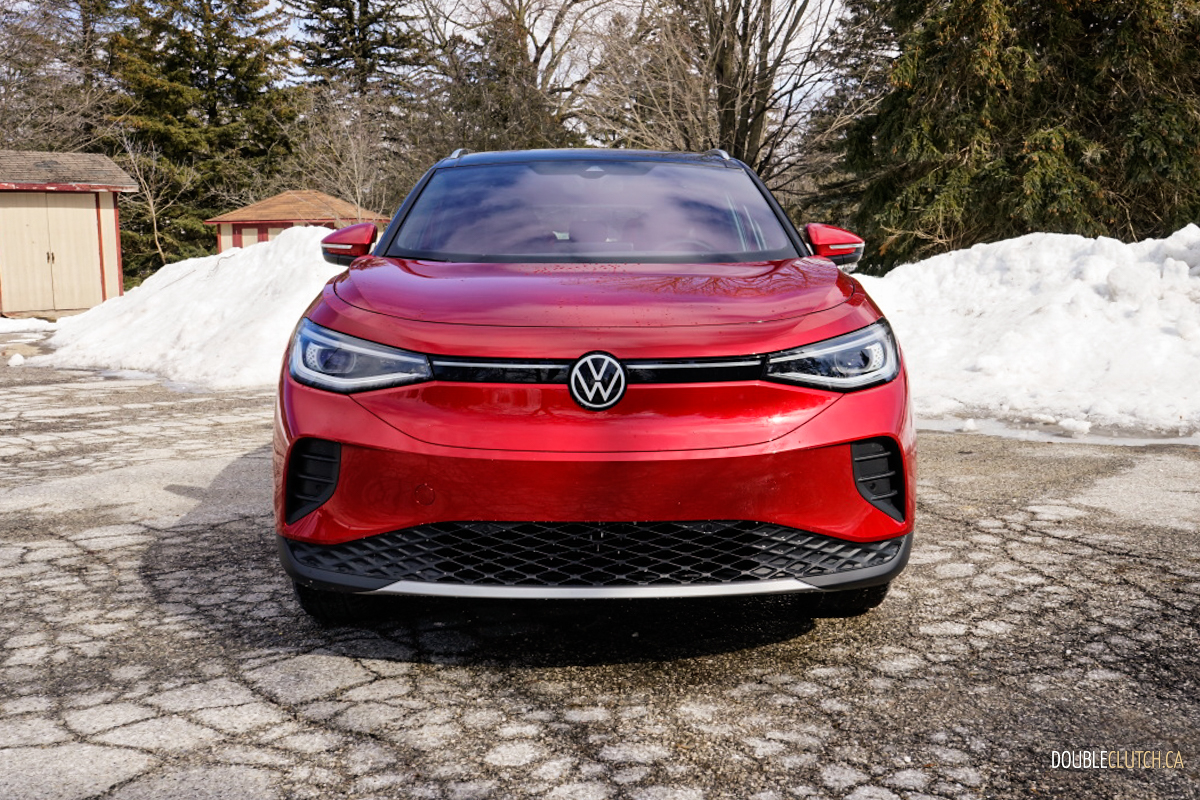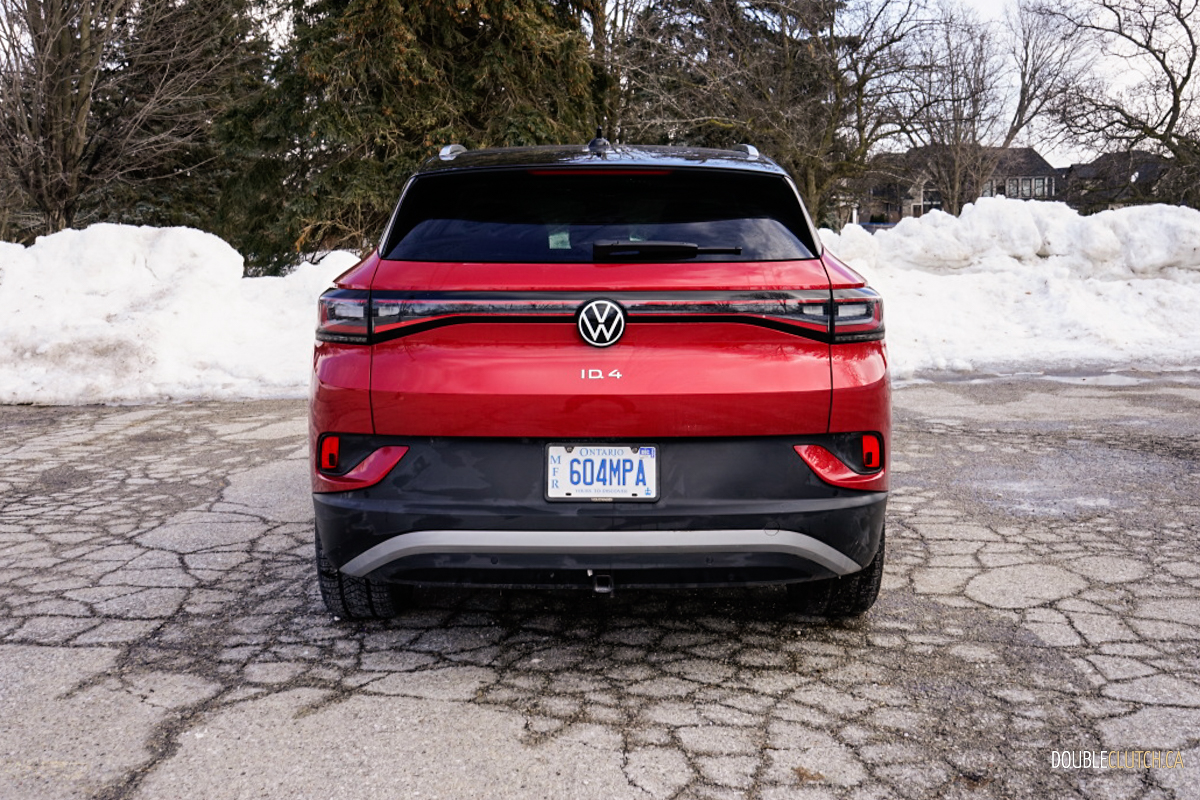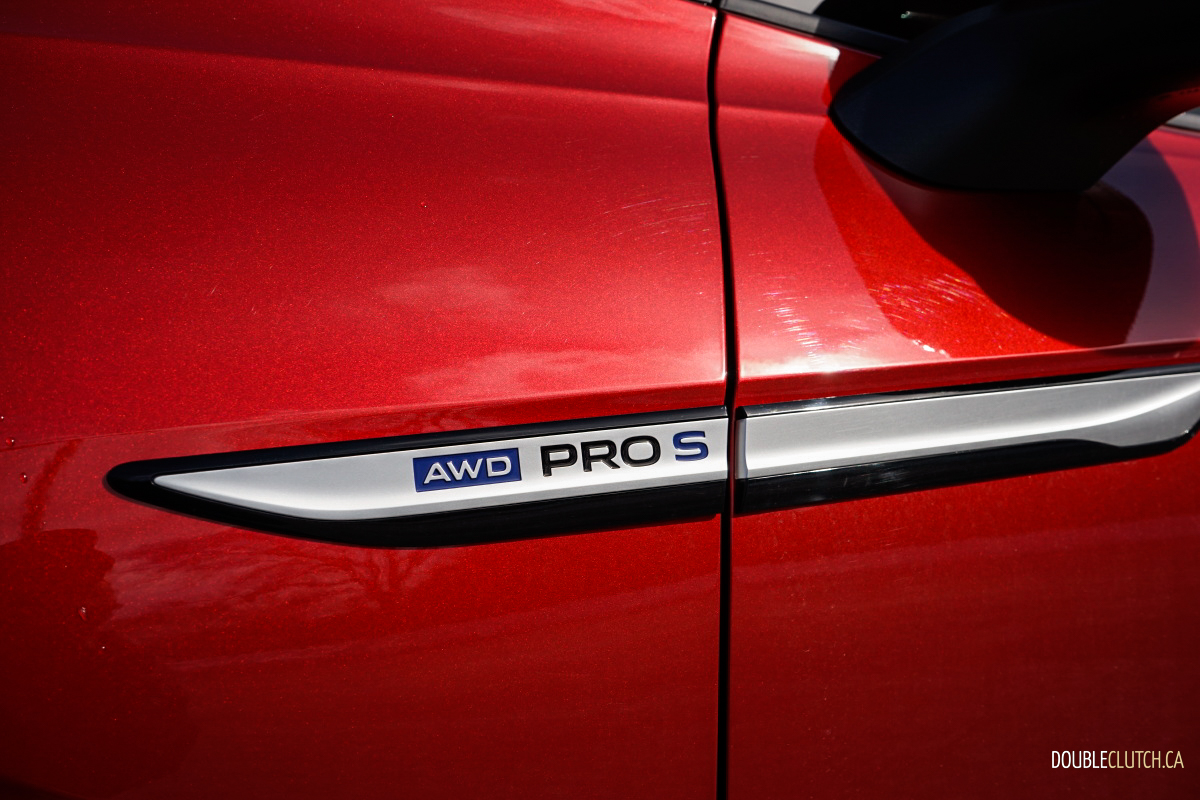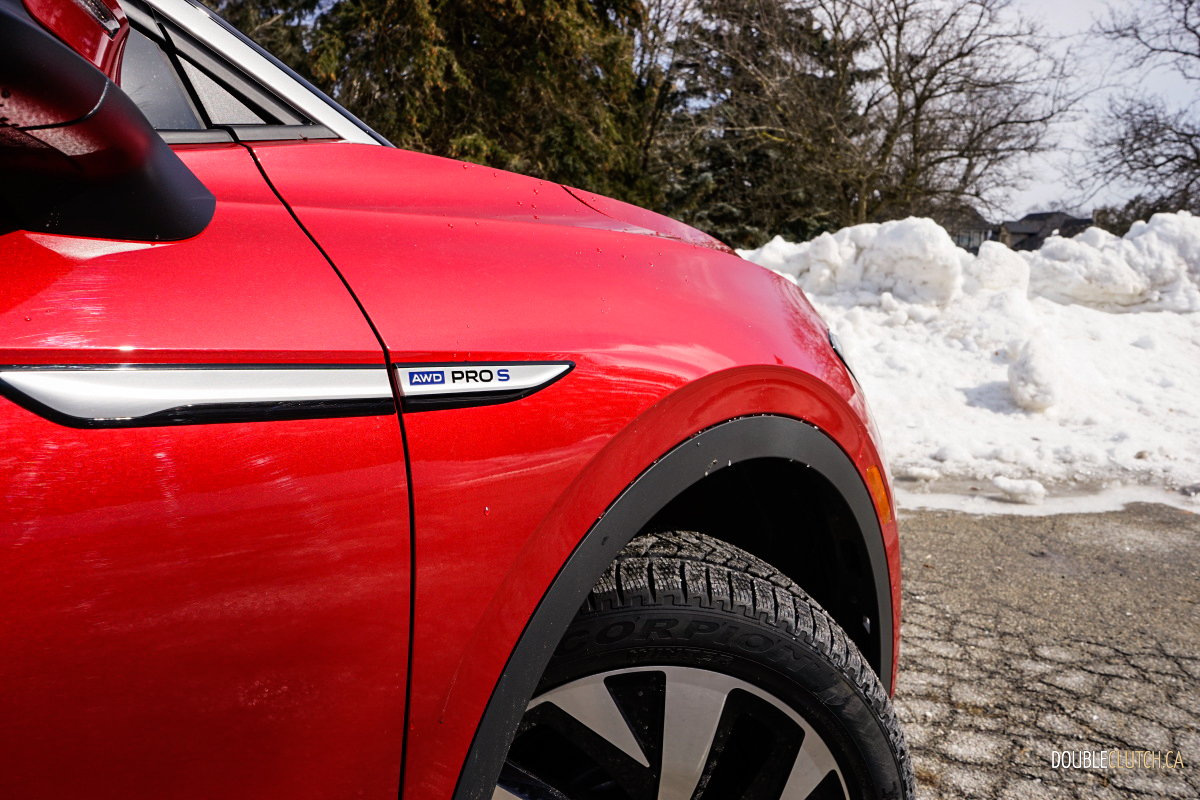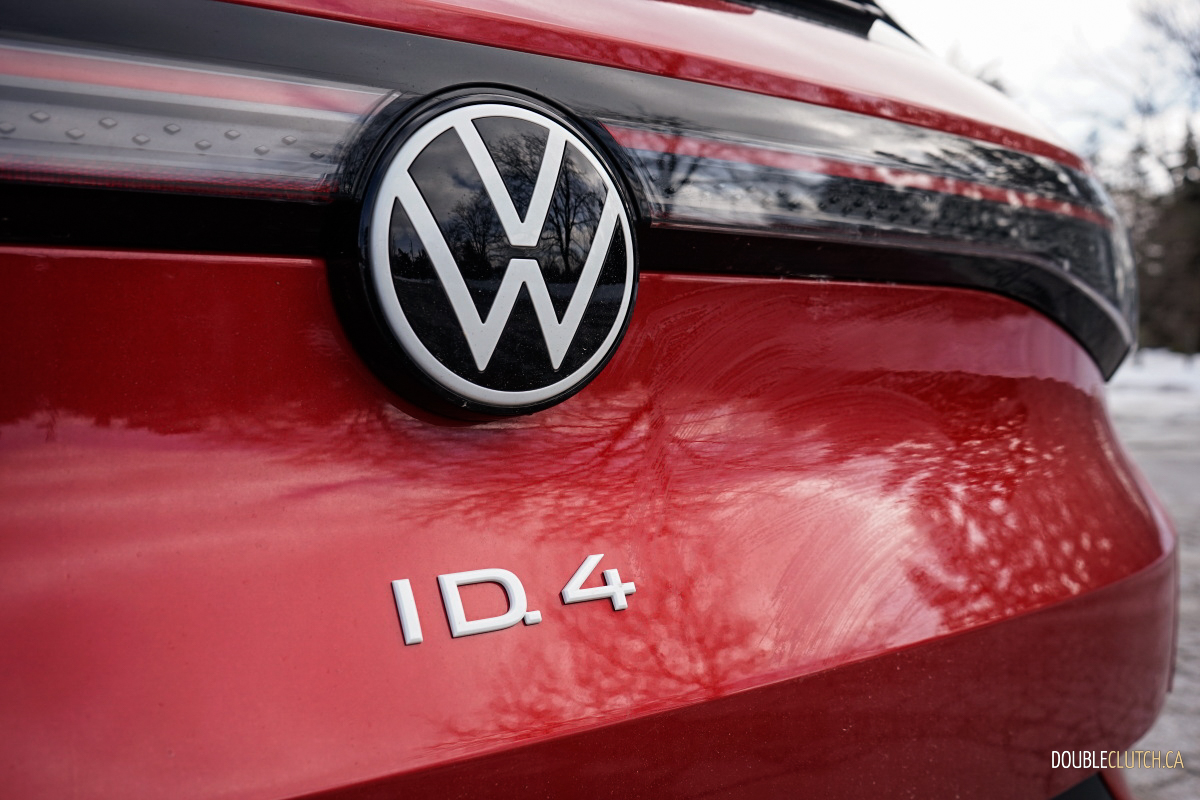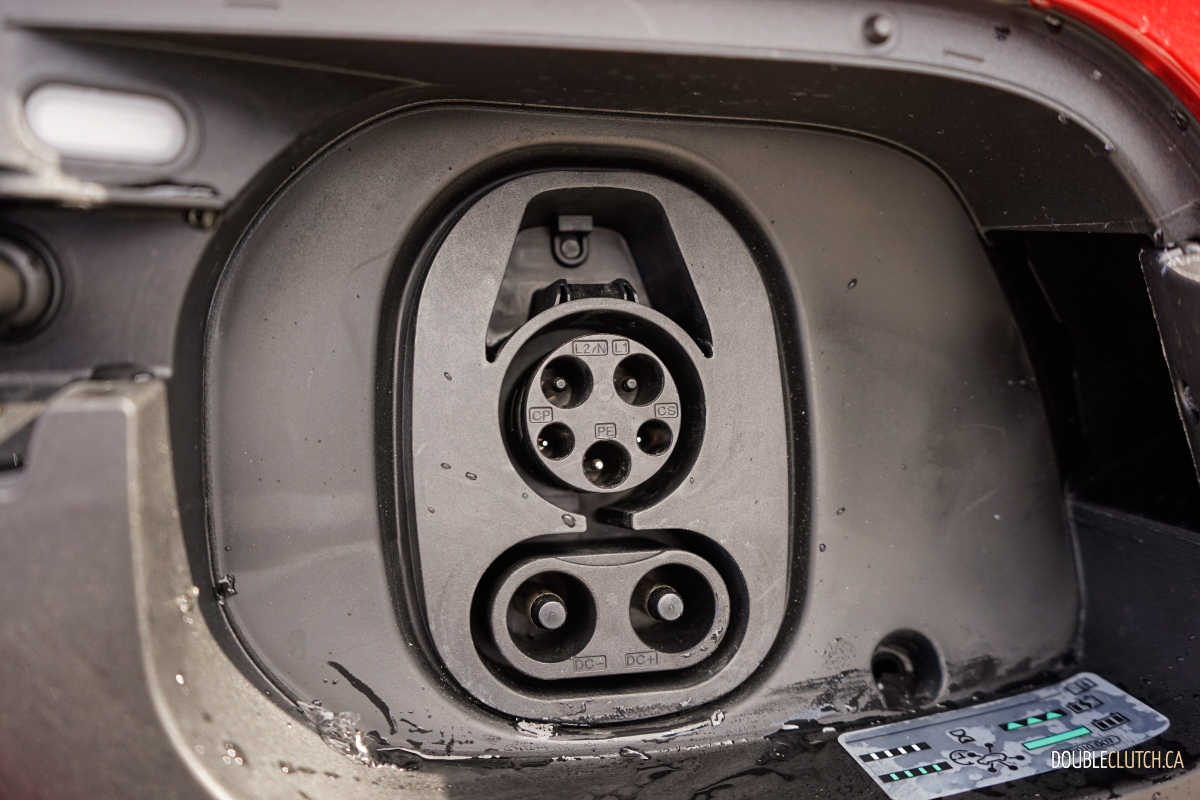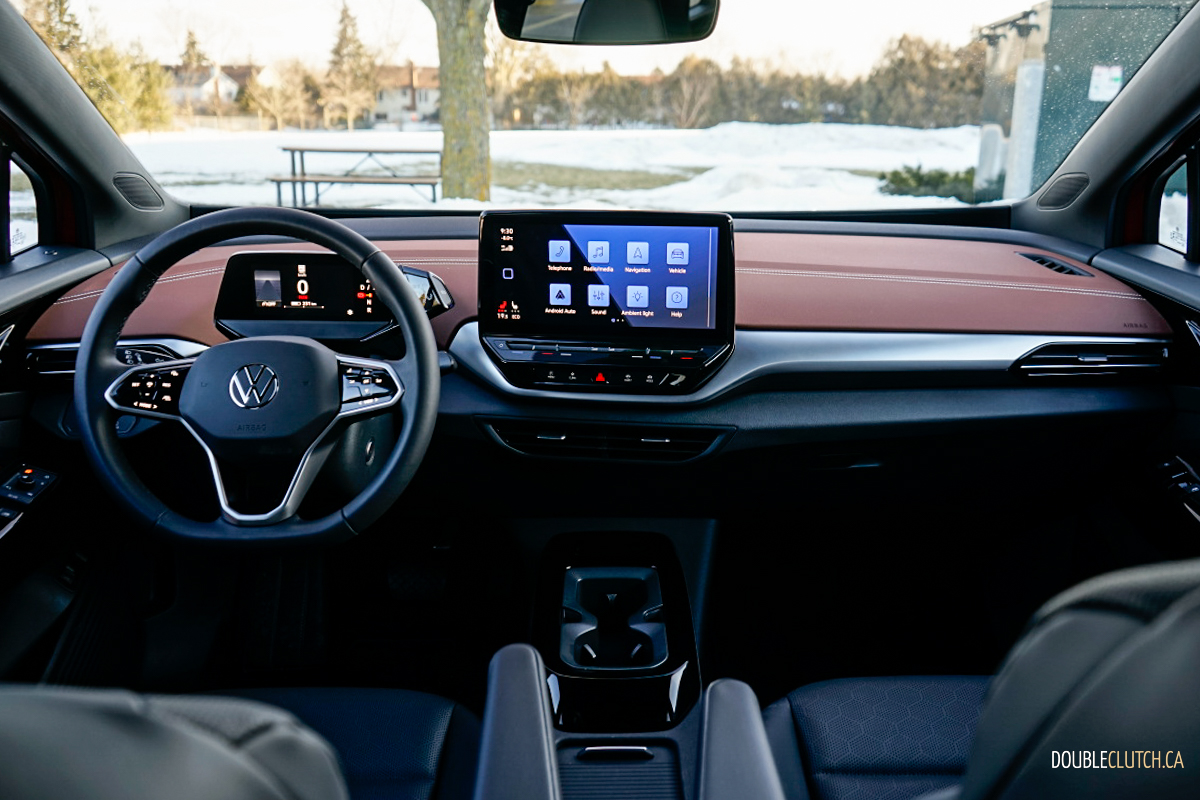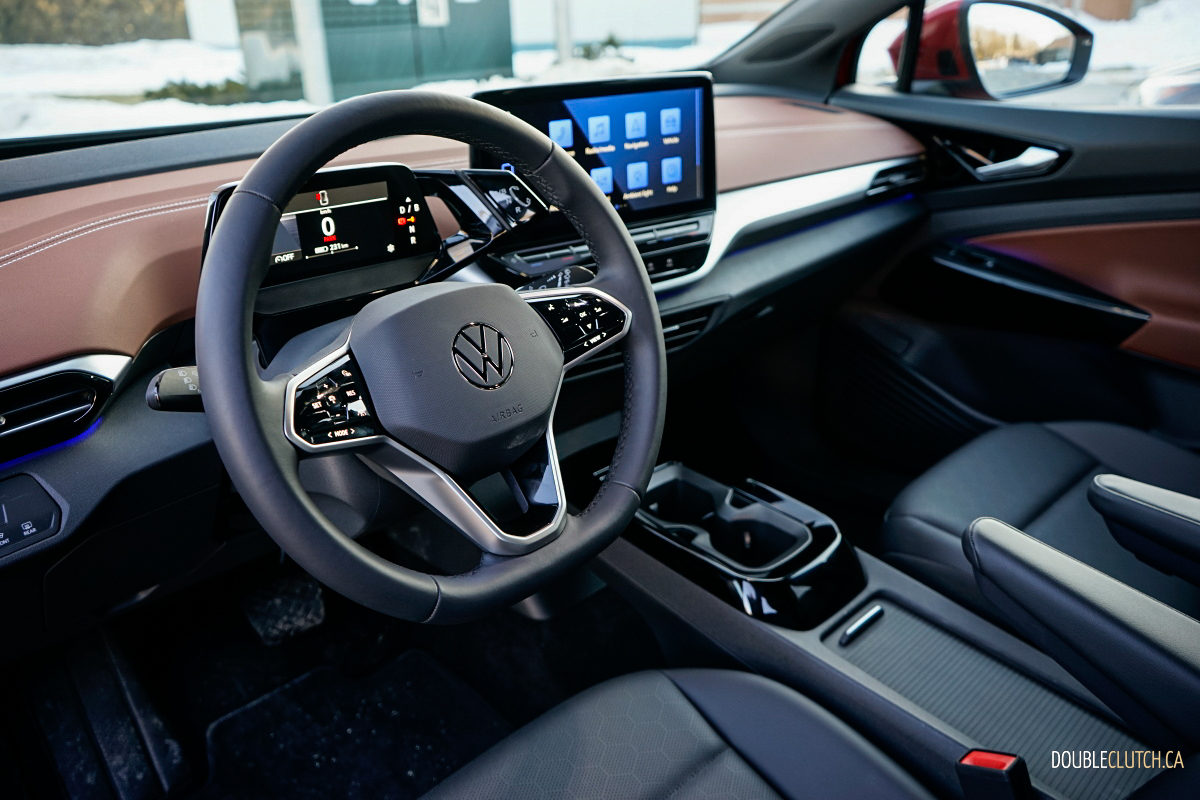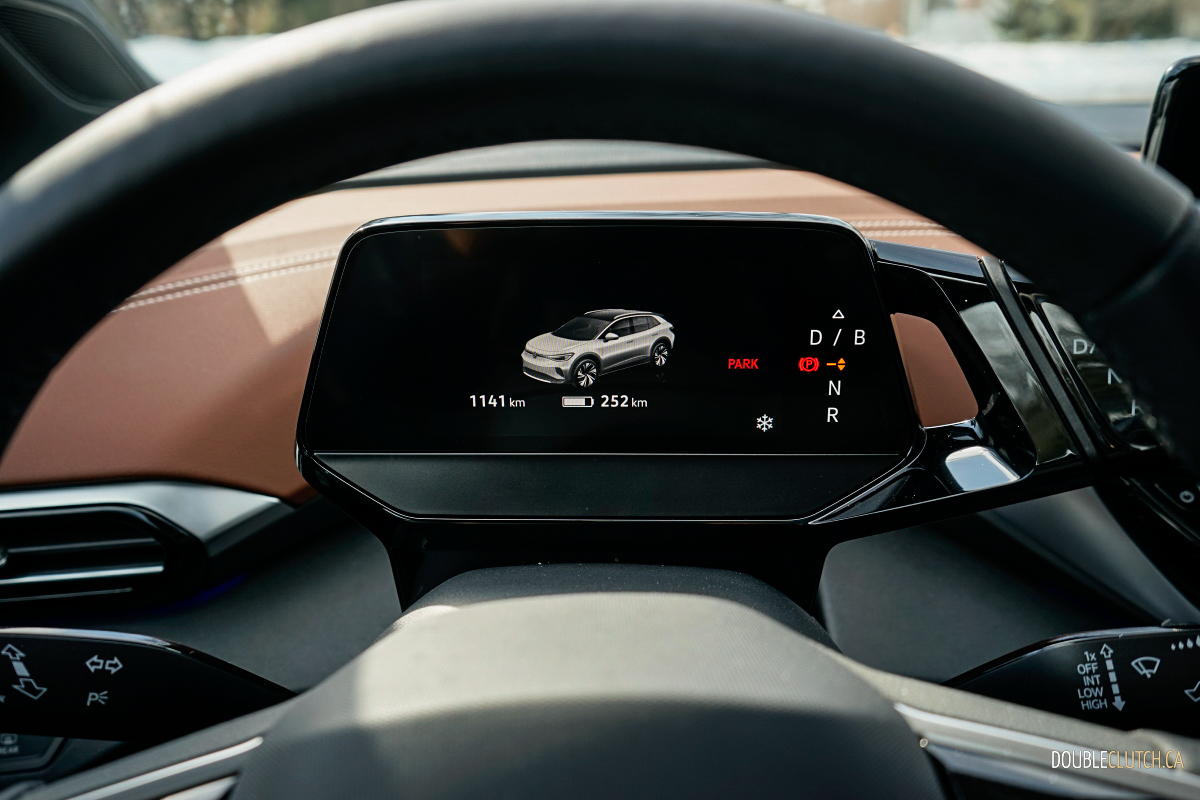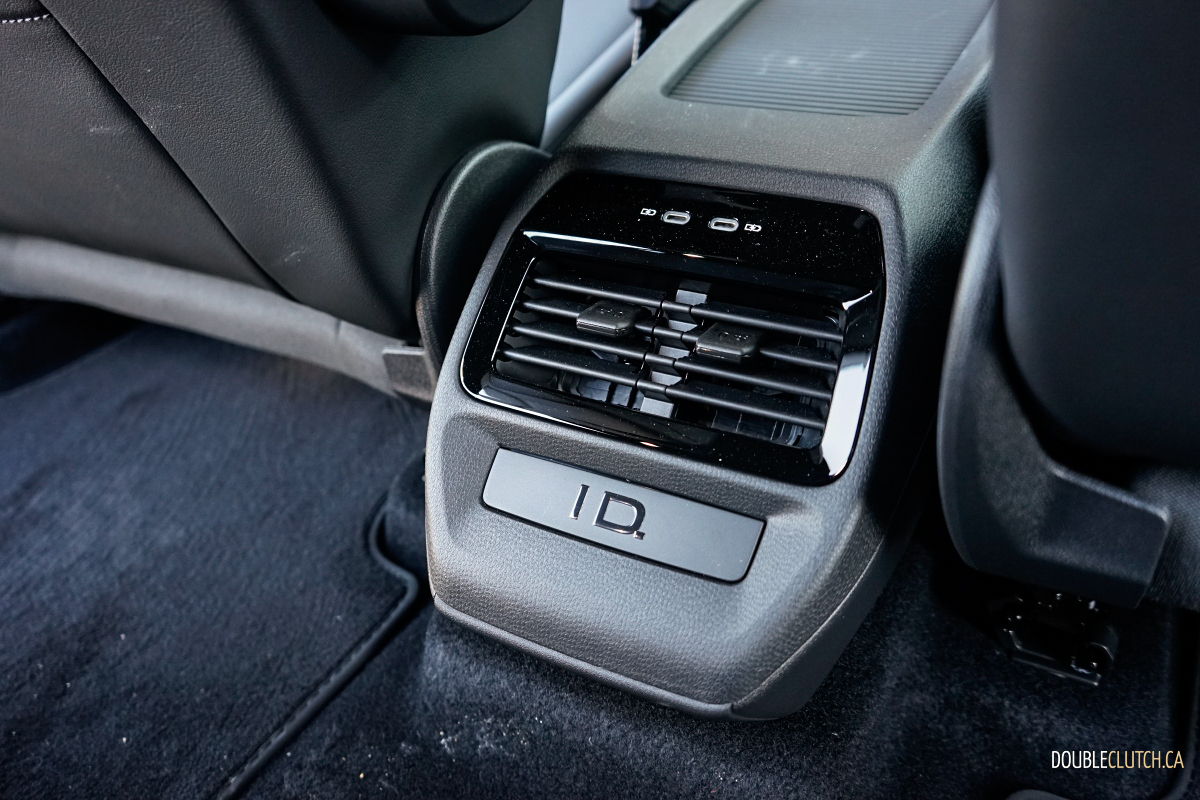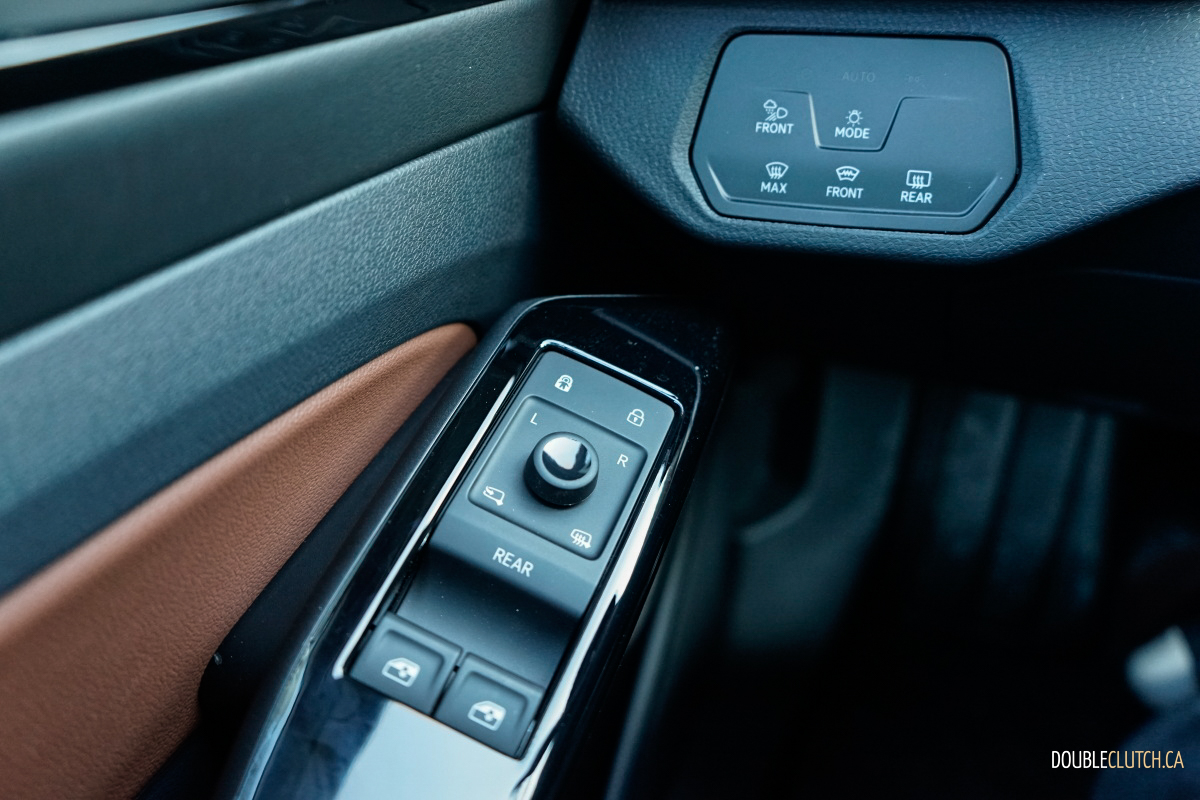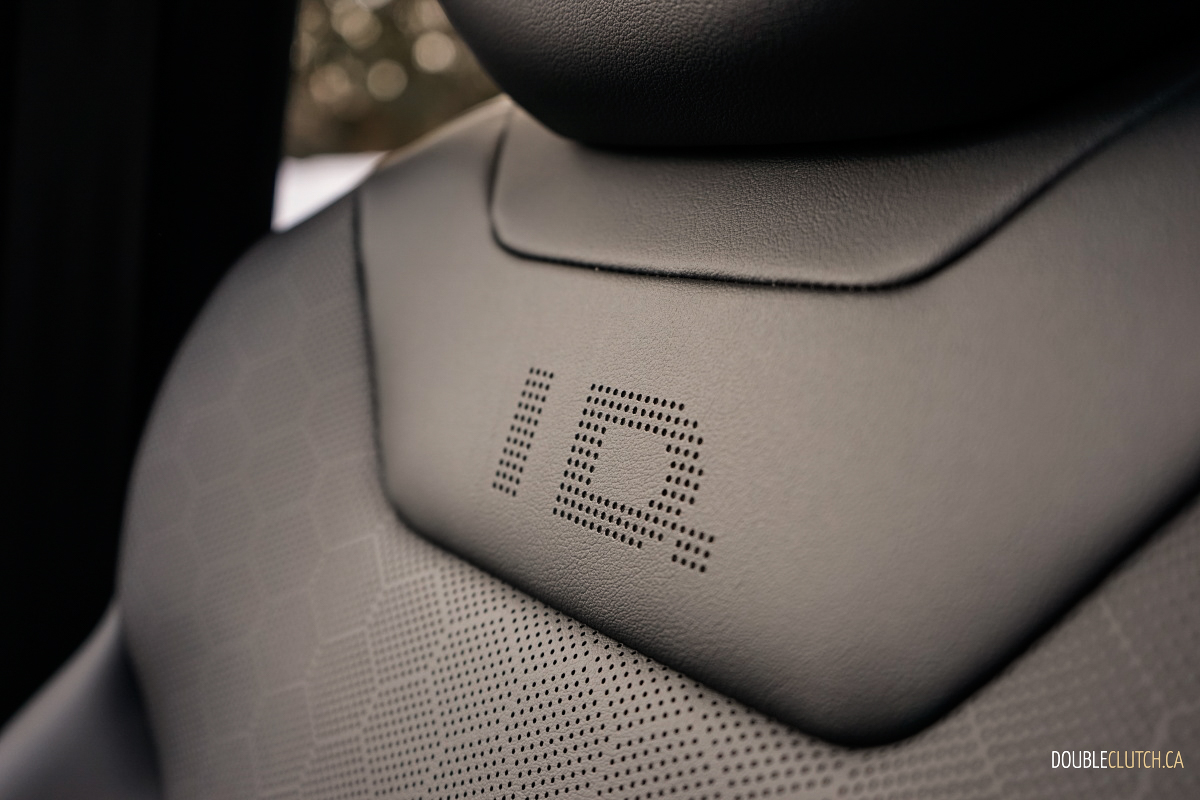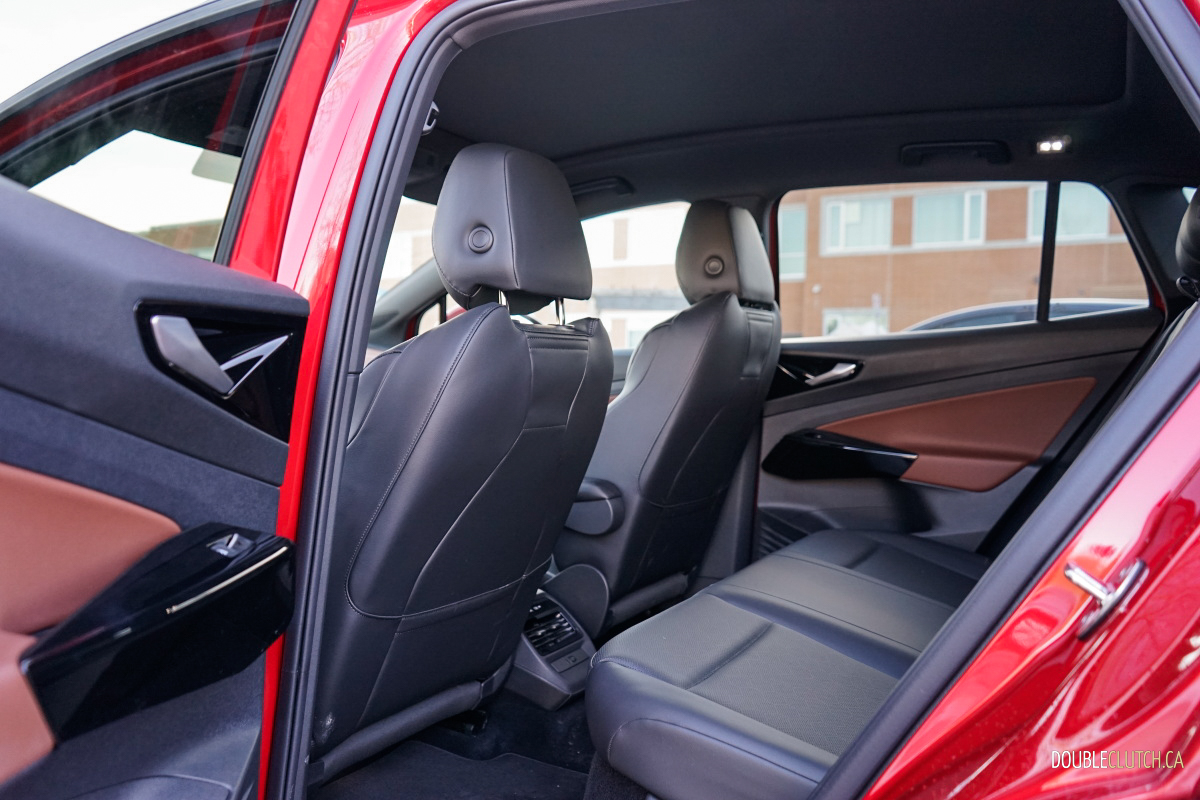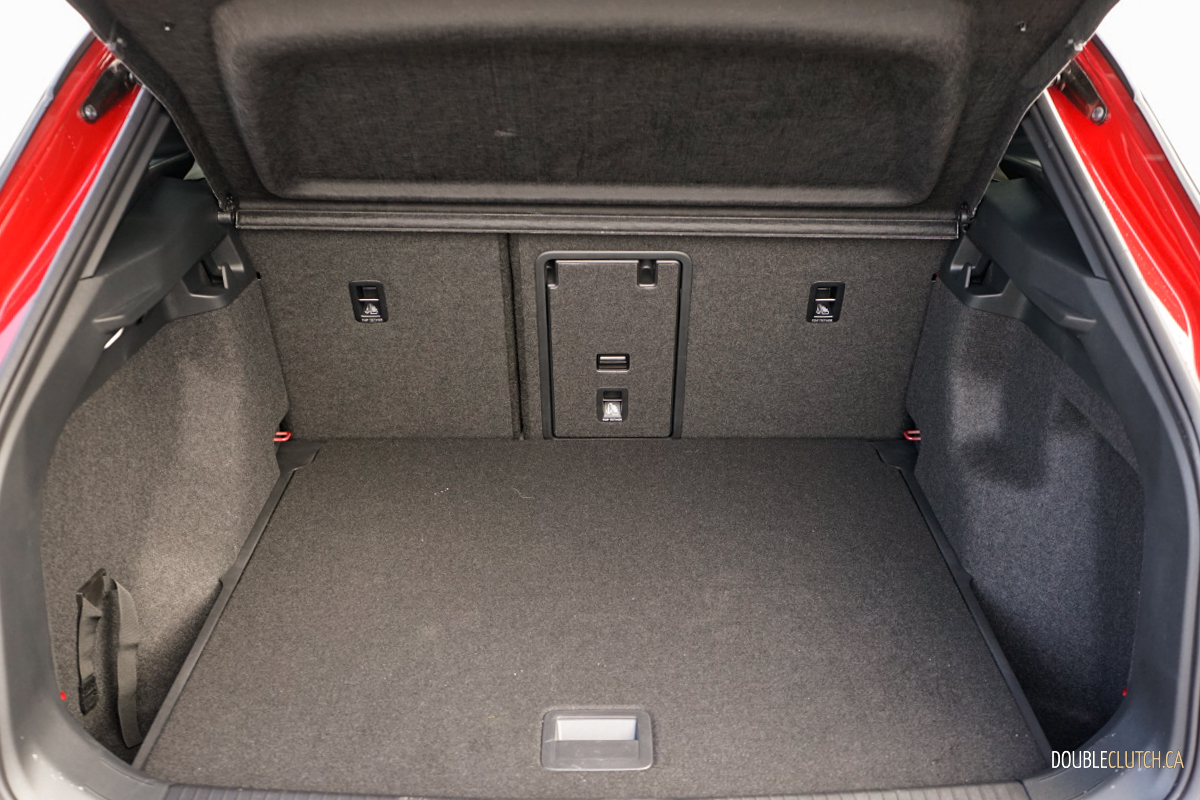The adoption rate is slowly creeping up in North America as buyers find themselves more open to trying out the lifestyle, and we are seeing more and more of them trickle into the mainstream market. Volkswagen got to work early and offered up the 2022 Volkswagen ID.4 AWD Pro S – before the big wave of mainstream EVs hits us over the next few years.
The Volkswagen ID.4 arrives with a fresh take on the modern crossover – its ride height is raised when compared to the traditional wagon but not nearly as high as most SUVs today. The elongated body style suggests Volkswagen’s emphasis on their first all-electric SUV being practical and purpose-built, rather than creating a do-it-all sports-coupe-rugged-SUV that we so often see. Those optional 20-inch wheels and the silver accents as part of the Statement package do a good job in bringing contrast to the overall design and the beautiful Kings Red Metallic paint job allow it stand out against all the white EVs on the road today.
All ID.4 models employ a 201-horsepower motor driving the rear wheels, with all-wheel drive (AWD) models getting an additional 107-horsepower motor to engage the front wheels when traction is required. Total output is 295 horsepower and 339 lb-ft of torque which is plentiful. Just like every EV in the market today, the Volkswagen ID.4 AWD feels more powerful than any gasoline vehicles with similar output and surges forward with full acceleration power at a moment’s notice. Power does drop off steeply after the initial rush but the ID.4 manages to maintain smooth acceleration with no issues keeping up with traffic.
Despite having an extra motor, the AWD model only loses 14 kilometres of range when compared to the rear-wheel drive single-motor versions, allowing for 386-kilometres of uninterrupted driving. This is a remarkable feat when you consider that both models share the same 82-kilowatt-hour (kWh) battery, and can charge at speeds up to 135 kW – meaning that you can get up to 100 kilometres of range in as little as 10 minutes on a public direct current (DC) fast charger. Owners with Level 2 charging at home will be able to get a full charge in as little as seven and a half hours.
Our cold Canadian winters often wreak havocs on how far cars can go – regardless if they run on gasoline or electricity – and the ID.4 was no exception. Our observed range was about 350 kilometres on a full charge with aggressive drops as soon as we hit the highway. Fortunately, once we engaged Eco drive mode and regenerative braking (one-pedal driving), we were able to observe more accurate estimates. ID.4 AWD Pro models can also tow up to 2,700 pounds with a braked trailer which adds to its versatility, but we expect the range to drop significantly.
Moving inside, where we observed a simplistic design with only four buttons on the centre console. While we think this layout looks clean and well suited to the ID.4’s overall design language, its usability suffered as a result of its over-reliance on touch functions. Volume and climate adjustments are all though the capacitive slider located at the foot of the upgraded 12-inch touchscreen, and a lot of basic vehicle functions such as seat and steering heating and radio tuner are buried in the software.
Furthermore, there is the elimination of dedicated rear window switches whereby drivers are asked to press the ‘rear’ button before using the two window switches to control the rear windows. This is not a big deal on its own but it added to a convoluted experience when combined with all the other additional steps undertaken.
Fortunately, there are shortcuts to help with the user experience. For example, the seat heating menu can be brought up by touching the climate control sliders with two fingers, and steering wheel heating can be operated using a slide down menu from the top of the screen. Users can also use the system’s built-in voice recognition function to control a wide array of functions to alleviate the need for touch, with standard Apple CarPlay and Android Auto support.
Interior comfort is acceptable in the ID.4 thanks to comfortable seats and generous head and legroom throughout. Ride quality is slightly harsher than we would have liked which we attributed to the oversized 20-inch wheels worn, and wind noise could have been better controlled as well. Cargo capacity is rated at 858 litres behind the second row, and 1,818 litres when they are folded down. It is worth noting that the ID.4 does not have any storage space under the hood which is a bit of an oddity in the EV segment.
The 2022 Volkswagen ID.4 comes standard with Volkswagen’s IQ.Drive driver assistance technology, including Travel Assist (semi-automated driving assistance), Front Assist, Active Side Assist, Rear Traffic Alert, Adaptive Cruise Control, Lane Assist, and Emergency Assist systems.
Starting at $44,995 for the base RWD version, the Volkswagen ID.4 is a compelling choice for anyone looking for an entry-level EV SUV. The AWD model is $5,000 more, and our tester is equipped with a $495 paint job and the $8,000 Statement Package (Panoramic glass roof, leatherette 12-way power seats, 20-inch Drammen wheels, Power tailgate) that brings our as-tested total to $58,490. There are government incentives that can be applied to help bring the cost down even more.
Competition for mainstream EVs is heating up, and the 2022 Volkswagen ID.4 AWD Pro S is well positioned to take an early lead along with the Hyundai IONQ 5. They’re not without flaws, but they both bring a dash of style to the seemingly cookie-cutter EV SUV segment, and we expect their competitive pricing strategy for both cars will serve them well in the long run as more buyers dip their toes into the EV world.

